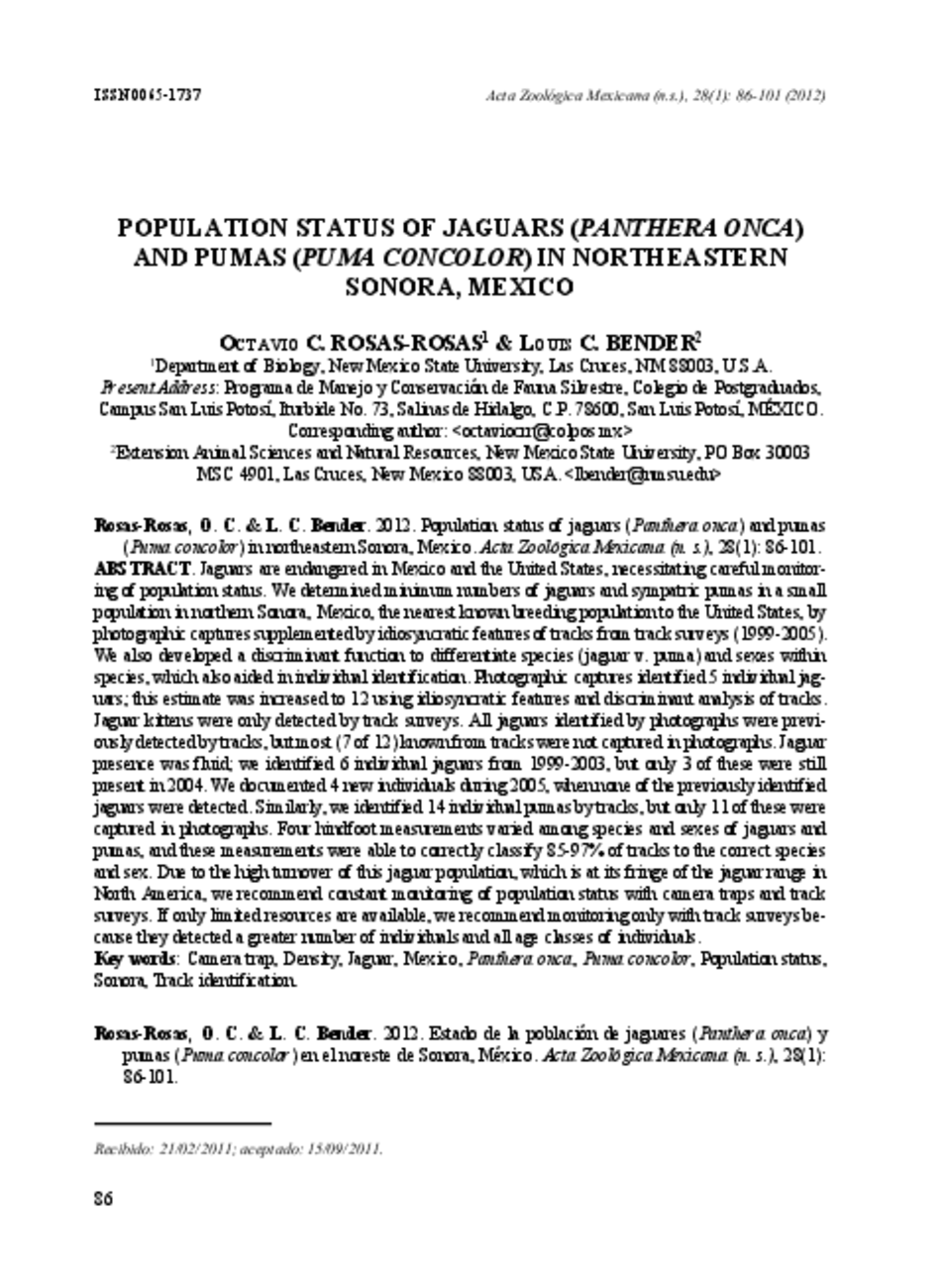Population Status Of Jaguars (Panthera Onca) And Pumas (Puma Concolor) In Northeastern Sonora, Mexico, Rosas and Bender
Jaguars are endangered in Mexico and the United States, necessitating careful monitor- ing of population status. We determined minimum numbers of jaguars and sympatric pumas in a small population in northern Sonora, Mexico, the nearest known breeding population to the United States, by photographic captures supplemented by idiosyncratic features of tracks from track surveys (1999-2005). We also developed a discriminant function to differentiate species (jaguar v. puma) and sexes within species, which also aided in individual identification. Photographic captures identified 5 individual jag- uars; this estimate was increased to 12 using idiosyncratic features and discriminant analysis of tracks. Jaguar kittens were only detected by track surveys. All jaguars identified by photographs were previ- ously detected by tracks, but most (7 of 12) known from tracks were not captured in photographs. Jaguar presence was fluid; we identified 6 individual jaguars from 1999-2003, but only 3 of these were still present in 2004. We documented 4 new individuals during 2005, when none of the previously identified jaguars were detected. Similarly, we identified 14 individual pumas by tracks, but only 11 of these were captured in photographs. Four hindfoot measurements varied among species and sexes of jaguars and pumas, and these measurements were able to correctly classify 85-97% of tracks to the correct species and sex. Due to the high turnover of this jaguar population, which is at its fringe of the jaguar range in North America, we recommend constant monitoring of population status with camera traps and track surveys. If only limited resources are available, we recommend monitoring only with track surveys be- cause they detected a greater number of individuals and all age classes of individuals.

